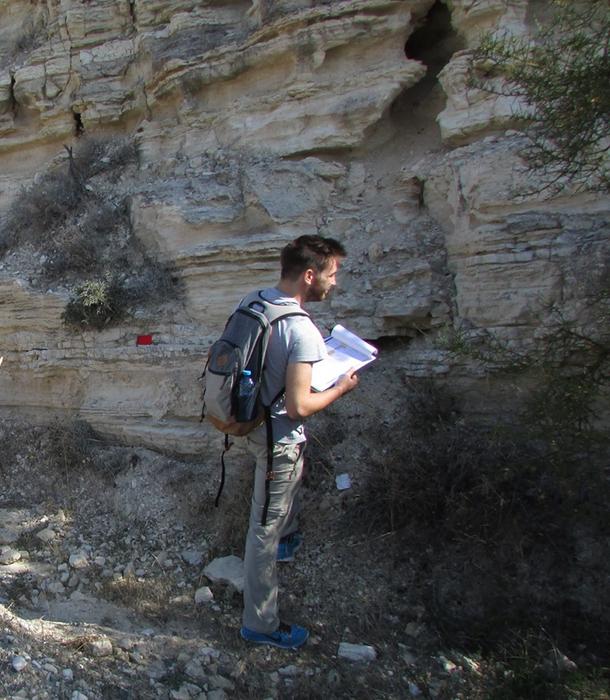A groundbreaking study now challenges our long-held assumptions about the timing of the Cambrian explosion, proposing that this pivotal evolutionary event may have taken place significantly earlier than previously believed. Renowned researchers Olmo Miguez Salas from the University of Barcelona and Zekun Wang from the Natural History Museum in London provide compelling evidence based on meticulous analyses of trace fossils dating back roughly 545 million years ago—some 15 million years before the traditionally accepted onset of the Cambrian. Their findings, recently published in the prestigious journal Geology, open a novel window onto ancient biological diversity and the earliest morphological complexities that shaped the evolution of animal life.
For decades, the Cambrian explosion has symbolized an evolutionary landmark during which the majority of animal phyla first appeared in the fossil record, exhibiting a remarkable diversification of forms including the establishment of fundamental bilateral body plans. Typically dated to approximately 530 million years ago, this interval signaled the emergence of complex structures such as exoskeletons, segmentation, and sensory organs, which underpin the organization of modern animals. However, direct fossil evidence for such innovations before this window has been scarce, leading many scientists to assume that the Cambrian event represented a sudden burst of evolutionary novelty.
The novel approach employed by Miguez Salas and Wang centers not on traditional body fossils, which are often limited to organisms possessing hard parts, but on ichnofossils—trace fossils that record the behavioral imprints left by ancient life. These geological signatures, representing locomotion, feeding, or resting modes, provide invaluable clues about the organisms’ anatomical features, ecological adaptations, and environmental interactions. By quantitatively decoding the morphology and movement trajectories preserved in these trace fossils, the researchers inferred the likely body profiles and locomotive capacities of Ediacaran-Cambrian communities, revealing the presence of slender, bilateral organisms capable of directed movement much earlier than conventionally assumed.
Key to their analysis was the observation of linear proportionality in the scaling of trace trajectories. Modern animals with hydrostatic bodies often demonstrate specific locomotor patterns dictated by internal fluid dynamics and muscular segmentation. The study applied these biomechanical principles to the fossil traces of enigmatic Ediacaran-era species such as Archaeonassa, Gordia, Helminthopsis, and Parapsammichnites. Their reconstructed body plans suggest the existence of coelomic hydrostatic structures with defined anterior-posterior axes and segmentation, indicating a level of anatomical complexity that challenges the notion of a late and sudden emergence of these traits.
This re-evaluation of the fossil record shifts the timeline of evolutionary innovation backward by millions of years, suggesting that the ecological and morphological groundwork for the Cambrian explosion was laid gradually during the late Ediacaran period. These early inhabitants likely possessed muscular systems enabling directional locomotion over microbial mats, a dominant substrate in their environments. Additionally, sensory faculties inferred from their movement patterns imply that these organisms could respond adaptively to heterogeneous ecological niches, further underscoring the sophistication of pre-Cambrian life.
The ecological implications of such findings are profound. The capability for directed movement and sensory response would have facilitated more complex predator-prey interactions, resource exploitation, and habitat colonization, thus driving evolutionary pressures for diversification and innovation. This scenario supports the concept of "ecological engineering," wherein behavioral and morphological adaptations continually reshape environmental landscapes, fostering the rise of new life forms. The results also bridge a crucial gap in paleobiology, illuminating how soft-bodied and skeleton-deficient taxa contributed to early animal ecosystems in ways previously underappreciated due to fossil preservation biases.
Traditionally, paleontologists have focused heavily on hard-part fossils to unravel the evolutionary history of the Cambrian explosion. Such fossils, however, provide a narrow and potentially skewed perspective because many early animals lacked mineralized tissues. Trace fossils democratize this view by capturing the full spectrum of biological activity, including the movement and interaction of soft-bodied organisms. Miguez Salas champions this methodological pivot, emphasizing that locomotory traces encode detailed behavioral and anatomical information, thus expanding our toolkit for exploring early complex life.
Furthermore, this pioneering study exemplifies the power of quantitative paleobiology—applying rigorous mathematical and biomechanical analyses to ancient trace records. The scaling laws elucidated here not only validate interpretations of Ediacaran locomotion but pave the way for systematic assessments of morphological evolution across other critical transitions in Earth’s history, such as the Ordovician radiation. This framework allows researchers to test long-standing hypotheses and generate new insights into evolutionary tempo and mode, moving beyond qualitative descriptions to mechanistic understanding.
Importantly, the study heralds a future research agenda wherein newly discovered trace fossils can be rigorously analyzed to refine our picture of early animal evolution. Each new specimen offers an opportunity to test the universality of the scaling laws and to delineate the evolutionary pathways that gave rise to modern animal phyla. It invites a re-examination of paleontological collections worldwide, urging scientists to reassess trace fossil assemblages in light of these methodological advancements.
The collaborative nature of this research underscores the interdisciplinary essence of contemporary paleontology, weaving together earth science, biology, fluid mechanics, and computational modeling. By integrating expertise across these domains, the authors reconstruct scenarios that were once beyond reach, enhancing our understanding of life’s formative epochs and the evolutionary innovations that underpin biodiversity today.
In summary, the study by Miguez Salas and Wang revolutionizes our understanding of the Cambrian explosion by providing quantitative evidence that complex anatomical traits and active locomotion emerged tens of millions of years before the Cambrian itself. Through their innovative use of trace fossil analysis, they illuminate a previously obscured chapter in Earth’s evolutionary saga where early animals developed the body plans and capabilities foundational for subsequent diversification. This discovery not only enriches the paleontological narrative but also exemplifies the continuous refinement of scientific knowledge driven by technological and conceptual progress.
Subject of Research: Animals
Article Title: Quantitative decoding of Ediacaran locomotory trace fossilmorphologies: Evidence for the emergence of slender anterior-posterior body profiles
News Publication Date: 9-Jun-2025
Web References: http://dx.doi.org/10.1130/G53332.1
Image Credits: UNIVERSITY OF BARCELONA
Keywords: Evolutionary biology




